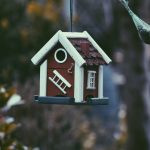Natural disasters, while unpredictable, can be devastating. Scotland, with its diverse landscape and unique climate, is not immune to the impacts of these disasters. From severe storms and flooding to landslides and snowstorms, a variety of natural events can jeopardize properties across the country. Therefore, taking preventive measures to safeguard your property is crucial. In this article, we’ll explore effective strategies to protect your home and belongings against natural disasters in Scotland.
Understanding the Risks in Scotland
First and foremost, to properly safeguard your property, it’s essential to understand the specific risks prevalent in Scotland. Natural disasters can vary greatly depending on geography, climate, and other local factors. In Scotland, common natural disasters include flooding, storms, landslides, and extreme snowfall.
A découvrir également : How Does the Presence of a Historical Landmark Affect Property Insurance in the UK?
Flooding, for instance, is a significant concern given Scotland’s vast network of rivers and proximity to the ocean. Heavy rainfall can lead to rivers overflowing, causing immense damage to properties in low-lying areas. Similarly, coastal regions are at risk from storm surges and rising sea levels.
Storms, particularly those characterized by strong winds and heavy rain, can wreak havoc on roofs, windows, and external structures. Such weather conditions are prevalent during the autumn and winter months.
Avez-vous vu cela : How to Manage the Financial Risks of Investing in Properties with High Subsidence Potential?
Landslides are another risk, particularly in the Highlands and other hilly areas. Factors such as heavy rainfall, deforestation, and construction can increase the likelihood of landslides, leading to property damage and road blockages.
Extreme snowfall, although less frequent, can still pose a threat, especially to properties not built to withstand heavy snow loads. This can lead to structural damage, power outages, and accessibility issues.
Understanding these risks allows you to take targeted measures to safeguard your property against potential natural disasters.
Flood Prevention and Management Strategies
Flooding is one of the most common natural disasters in Scotland. Therefore, implementing flood prevention and management strategies is crucial for property protection. These strategies range from simple home modifications to more complex infrastructure improvements.
Home Modifications
Installing flood barriers and shields can effectively prevent water from entering your home. These barriers are typically placed at doors, windows, and other entry points. Additionally, consider raising electrical outlets, wiring, and appliances above the potential flood level to prevent electrical hazards.
Another effective home modification is the installation of a sump pump. This device helps to remove water that has accumulated in a sump basin, commonly found in basements. By actively pumping water out, you can minimize flooding in your home.
Landscaping and Drainage
Proper landscaping and drainage systems play a vital role in flood prevention. Ensure that your property is graded away from the house so that water flows away rather than towards it. Installing French drains or dry wells can also help manage excess water.
Additionally, incorporating permeable materials in your driveways and walkways can reduce runoff, allowing water to soak into the ground naturally. This not only helps to prevent flooding but also aids in groundwater recharge.
Community and Government Initiatives
Engaging with local community and government initiatives can provide additional protection. Local councils often have flood management plans and provide resources for residents. Participating in community flood watch programs and staying informed through local alerts can help you prepare and respond effectively.
Stormproofing Your Property
Storms, particularly those characterized by high winds and heavy rain, can cause significant damage to properties. Stormproofing your home involves strengthening its structural integrity and protecting vulnerable areas.
Roof and Window Protection
One of the most vulnerable parts of your home during a storm is the roof. Ensure that your roof is in good condition by regularly checking for loose or missing shingles. Consider installing storm-resistant roofing materials that can withstand high winds.
Windows are another critical area. Installing storm shutters or impact-resistant windows can prevent breakage and reduce the risk of damage from flying debris. Additionally, reinforcing garage doors with braces can prevent them from being blown in.
Secure Outdoor Items
Outdoor items, such as garden furniture, potted plants, and decorative features, can become projectiles during a storm. Secure these items or bring them inside to prevent them from causing damage to your property or your neighbors’.
Tree Maintenance
Trees can pose a significant risk during storms. Regularly trim branches and remove dead or weak trees that could fall and cause damage. Ensuring that trees are healthy and well-maintained can significantly reduce the risk of storm-related damage.
Emergency Preparedness
Having an emergency preparedness plan is crucial. This includes having a well-stocked emergency kit, knowing where to shut off utilities, and having a communication plan in place. Staying informed through weather alerts and knowing the nearest storm shelters can also enhance your safety during a storm.
Landslide Risk Reduction
Landslides pose a significant threat, particularly in hilly and mountainous regions of Scotland. Reducing the risk of landslides involves understanding the factors that contribute to them and implementing measures to mitigate these risks.
Soil Stabilization and Vegetation
One of the most effective ways to reduce landslide risk is through soil stabilization and the use of vegetation. Planting deep-rooted trees and shrubs can help hold the soil together, reducing the likelihood of a landslide.
Retaining Walls
Constructing retaining walls can provide additional support to slopes and prevent soil erosion. These walls should be designed to withstand the pressure exerted by the soil and any additional water from heavy rainfall.
Proper Drainage
Ensuring proper drainage is crucial in preventing landslides. Install drainage systems that direct water away from slopes and prevent water accumulation. French drains, catch basins, and swales can effectively manage water flow and reduce soil saturation.
Monitoring and Early Warning Systems
Engage with local authorities and monitoring systems that provide early warnings for potential landslides. Staying informed about weather conditions and potential risks allows you to take timely action to protect your property.
Preparing for Extreme Snowfall
While not as frequent, extreme snowfall can pose significant challenges. Preparing your property for heavy snow involves both structural modifications and practical measures to ensure safety and accessibility.
Roof and Structural Integrity
Ensuring that your roof and overall property structure can withstand heavy snow loads is essential. Regularly inspect and maintain your roof, paying particular attention to areas that may accumulate more snow, such as valleys and eaves.
Insulation and Heating
Proper insulation and heating systems are crucial during extreme snowfall. Ensure that your home is well-insulated to prevent heat loss and reduce the risk of pipes freezing. Regularly maintain your heating system to ensure it is functioning efficiently during winter months.
Snow Removal
Having a snow removal plan in place is essential. Keep snow shovels, ice melt, and other snow removal tools readily available. Consider hiring professional snow removal services for larger areas or particularly heavy snowfall.
Emergency Supplies
Maintaining a stock of emergency supplies can make a significant difference during extreme snowfall. This includes having enough food, water, and medication to last several days in case of power outages or accessibility issues. Portable heaters, blankets, and warm clothing are also essential.
In conclusion, safeguarding your property against natural disasters in Scotland requires a comprehensive approach that involves understanding the risks, implementing preventive measures, and staying informed. From flood prevention and stormproofing to reducing landslide risks and preparing for extreme snowfall, each strategy plays a crucial role in protecting your home and ensuring your safety. By taking these proactive steps, you can significantly reduce the impact of natural disasters and provide a safer environment for yourself and your family.










